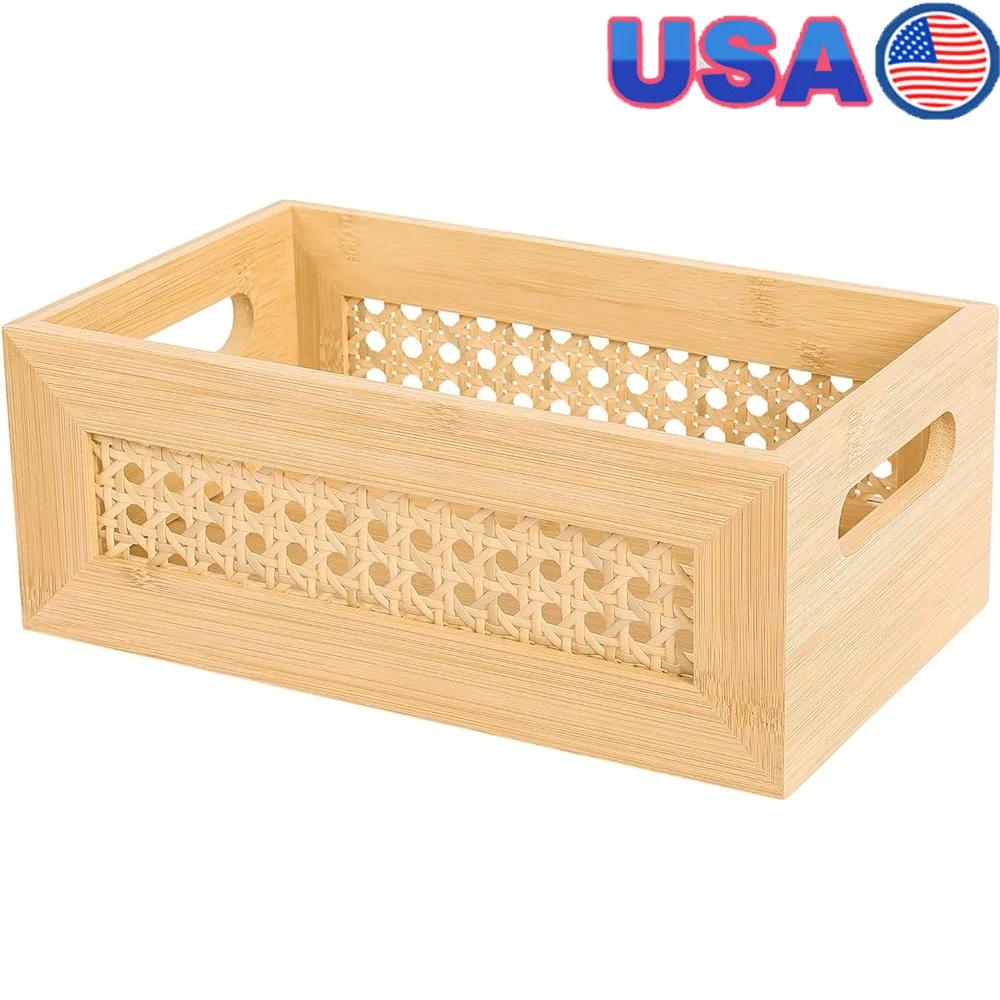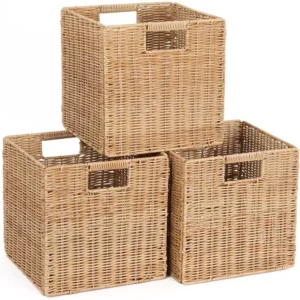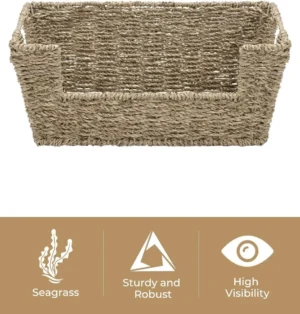Understanding Sustainable Wicker: More Than Just a Pretty Basket
The rise of eco-friendly home organization solutions has transformed how we think about storage. Sustainable wicker baskets are at the forefront of this movement, offering both beautiful aesthetics and environmental benefits. These natural woven containers have become increasingly popular as more homeowners seek ways to reduce their ecological footprint without sacrificing style.
What exactly makes wicker baskets eco-friendly? The answer lies in several key factors:
- Made from renewable plant materials that regrow quickly
- Naturally biodegradable at the end of their useful life
- Minimal processing requirements compared to plastic alternatives
- Lower carbon footprint throughout their lifecycle
- Traditional craftsmanship that supports artisanal communities
Today’s eco-conscious consumers are discovering that natural wicker vs synthetic options offer significant environmental advantages. The beauty of sustainable wicker baskets lies in their perfect balance of form and function – they organize your space while enhancing your décor with natural textures and warmth.
At Tidy Treasure, we’ve built our collection around this principle of “Organizing Life Beautifully.” Our wicker baskets combine time-honored weaving techniques with modern design sensibilities, creating storage solutions that are as environmentally responsible as they are elegant.
In this comprehensive guide, we’ll explore the various sustainable materials used in quality wicker baskets, their environmental credentials, and how to select pieces that align with your eco-friendly values while beautifully organizing your home.
Essential Criteria for Truly Eco-Friendly Wicker Materials
Not all wicker materials offer the same environmental benefits. To be genuinely sustainable, wicker basket materials should meet several important criteria:
Renewability
Truly eco-friendly wicker comes from plants that regenerate quickly. The best materials can be harvested repeatedly from the same plant, or grow rapidly enough to replenish within months rather than decades. This renewability ensures a continuous supply without depleting natural resources.
Biodegradability
Unlike synthetic alternatives, natural wicker materials break down completely at the end of their useful life. When you eventually retire a natural wicker basket, it will decompose without leaving harmful microplastics or chemicals behind—completing a natural lifecycle that synthetic materials cannot match.
Low Environmental Impact During Cultivation
Sustainable wicker materials should require minimal intervention to grow successfully:
- Limited irrigation needs, relying mainly on natural rainfall
- Little to no pesticide requirements
- Ability to grow in diverse conditions without extensive land clearing
- Natural carbon sequestration that helps offset emissions
Understanding these differences is crucial when choosing between natural synthetic wicker for your home.
Sustainable Harvesting
Responsible harvesting techniques preserve the plant’s ability to regenerate. This might involve taking only certain stems from a plant, harvesting at specific times of year, or using methods that ensure the plant continues thriving afterward. The best synthetic vs natural wicker guide will explain these practices in detail.
Natural Processing
Eco-friendly wicker undergoes minimal chemical processing. Traditional methods focus on physical preparation like soaking, peeling, and drying rather than chemical treatments that can leach into the environment.
Rattan: The Premium Choice for Durable Wicker Baskets
Rattan stands as perhaps the most prestigious material in sustainable wicker basketry. This climbing palm species, native to tropical regions of Africa, Asia, and Australasia, offers exceptional durability paired with elegant appearance.
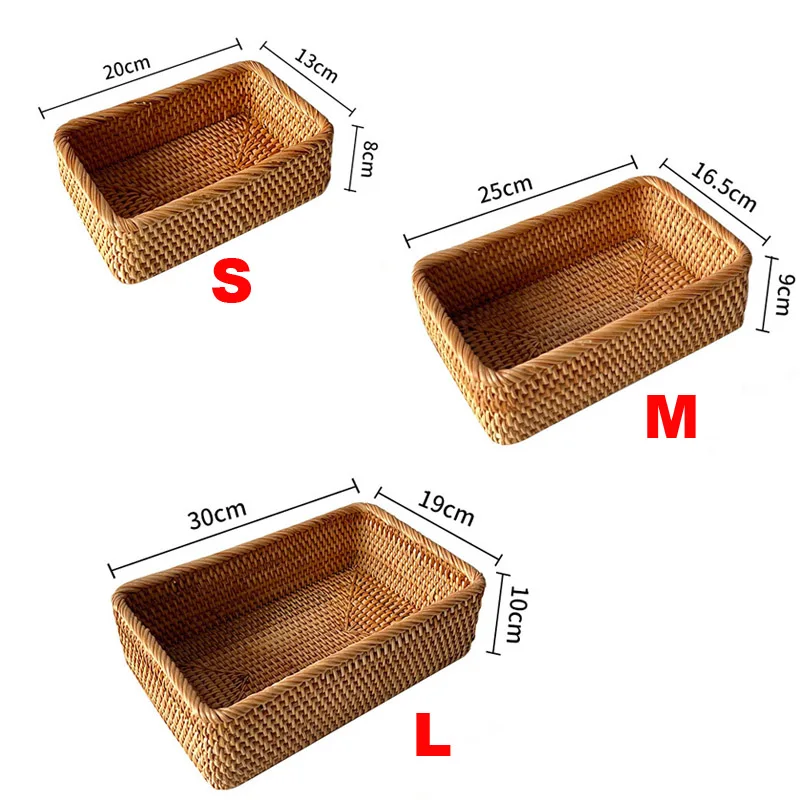
What makes rattan particularly sustainable:
- Grows at impressive rates of up to several inches per day
- Harvested without killing the plant, allowing for regeneration
- When properly managed, helps preserve forest ecosystems by providing economic alternatives to logging
- Solid core structure that creates exceptionally durable baskets
The physical properties of rattan make it ideal for basket weaving:
- Strong yet flexible solid core (unlike hollow bamboo)
- Easily manipulated when steamed or soaked
- Maintains its shape for decades with proper care
- Develops a beautiful patina as it ages
Our rattan baskets showcase these qualities perfectly, with each piece carefully selected for optimal strength and beauty. When comparing materials, natural vs synthetic rattan differences become apparent in both appearance and longevity—authentic rattan baskets often last generations rather than years.
Willow: Traditional Craftsmanship Meets Modern Sustainability
Willow represents one of the oldest and most sustainable basket-weaving traditions, with evidence of willow baskets dating back thousands of years across numerous cultures.
What makes willow exceptionally eco-friendly:
- Regrows rapidly after harvesting through a process called coppicing
- Single plant can produce weaving material for decades
- Requires very few agricultural inputs to thrive
- Supports diverse wildlife habitats and biodiversity
- Helps prevent soil erosion along waterways
The distinctive characteristics of willow as a weaving material include:
- Remarkable flexibility when freshly cut or soaked
- Variable colors ranging from pale cream to rich reddish-brown
- Lightweight yet surprisingly strong when properly dried
- Traditional appearance that complements both country and contemporary décor
Our wicker storage baskets collection features willow pieces that honor traditional craftsmanship while meeting modern organizational needs. These baskets demonstrate how ancient sustainable practices remain perfectly relevant in today’s eco-conscious homes.
Bamboo: The Rapid-Growth Champion for Modern Wicker Designs
Bamboo represents one of nature’s most remarkable renewable resources. Though commonly mistaken for a tree, bamboo is actually a grass—and the fastest-growing plant on earth. This extraordinary growth rate makes it an exceptionally sustainable choice for wicker basketry.
Key sustainability attributes of bamboo include:
- Phenomenal growth rates of up to 36 inches in 24 hours for some species
- Harvesting doesn’t kill the plant; it continues growing from the same root system
- Produces approximately 35% more oxygen than equivalent tree stands
- Extensive root systems prevent soil erosion and water pollution
- Requires no pesticides and minimal fertilization to thrive
As a basket material, bamboo offers impressive qualities:
- Exceptional strength-to-weight ratio
- Natural water resistance
- Split easily into various widths for different weaving techniques
- Contemporary aesthetic that suits modern interiors
- Naturally antibacterial properties
Our woven storage baskets include bamboo options that showcase its versatility and modern appeal. The best bamboo baskets come from mature plants (3-5 years old), which provide optimal strength and durability compared to younger shoots.
Seagrass and Water Hyacinth: Turning Coastal Resources into Beautiful Baskets
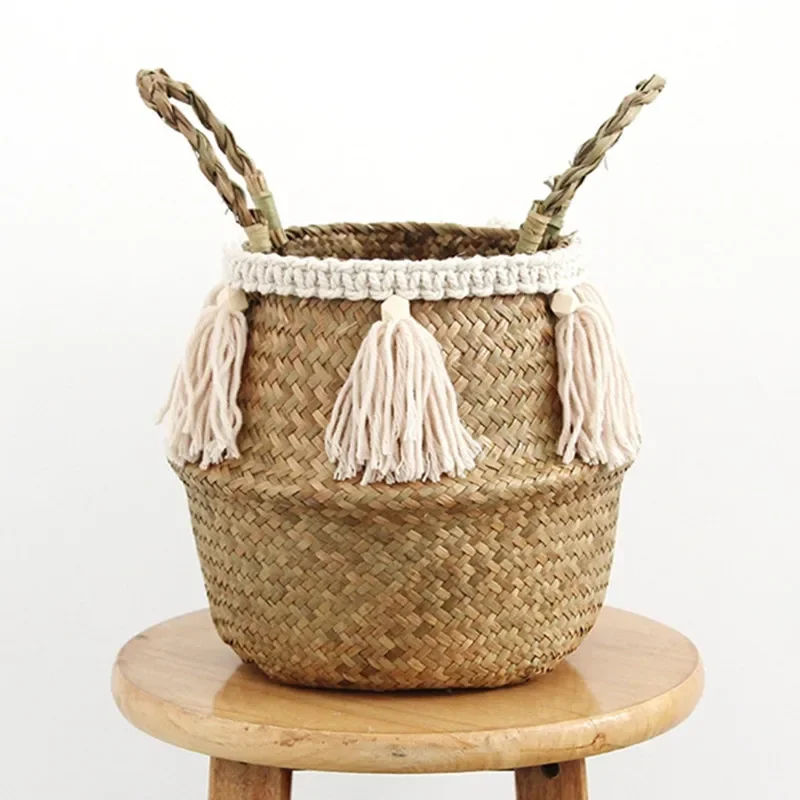
Seagrass
This remarkable material grows in coastal saltwater environments and brings unique properties to basket weaving:
- Natural water-resistance from growing in saline conditions
- Distinctive texture and subtle sea-scent when new
- Harvested sustainably by cutting rather than uprooting
- Supports crucial marine ecosystems and helps prevent coastal erosion
- Dries to a beautiful golden hue that darkens gently with age
Seagrass baskets excel in areas with moderate humidity, offering:
– Tight, consistent weaving patterns
– Sturdy structure that maintains its shape
– Subtle variation in natural coloring
– Resistance to everyday wear and tear
Water Hyacinth
Water hyacinth tells a fascinating sustainability story—it’s an invasive aquatic plant that can damage ecosystems when uncontrolled, but becomes a valuable resource when harvested for basket making:
- Harvesting helps clear clogged waterways, improving water flow and ecosystem health
- Extremely rapid growth means abundant material availability
- Thick, spongy stems create substantial, distinctive baskets
- Proper drying creates durable material with interesting textural elements
- Rich brown color develops as it ages, adding warmth to home interiors
Our woven laundry baskets collection features both seagrass and water hyacinth options, each bringing unique characteristics to home organization. These materials demonstrate how sustainable harvesting can transform potential environmental problems into beautiful household solutions.
Plant Fibers: Jute, Raffia, and Other Versatile Weaving Materials
Beyond the major wicker materials, several plant-derived fibers offer excellent eco-friendly alternatives for basket weaving, each with distinct characteristics and environmental benefits.
Jute
This natural fiber comes from the stems of the jute plant, offering impressive sustainability credentials:
- Grows quickly with minimal agricultural inputs
- Thrives on natural rainfall in many regions, reducing irrigation needs
- Absorbs significant CO₂ during growth
- Biodegrades completely when discarded
- One of the most affordable natural fibers available
Jute characteristics for basket making:
– Strong tensile strength when dry
– Natural golden brown color
– Slightly coarse texture adds rustic appeal
– Excellent for structured basket designs
– Lightweight despite its strength
Raffia
Derived from the leaves of the raffia palm, this versatile fiber offers:
– Sustainable harvesting that doesn’t harm the parent plant
– Extremely flexible and easy to work with
– Soft texture compared to other basket materials
– Takes natural dyes beautifully for colorful designs
– Fine strands allow for detailed, intricate weaving
Other Plant-Based Options
Many agricultural byproducts and traditional materials provide sustainable basket-making options:
– Corn husks repurpose farm waste into beautiful, textural baskets
– Banana fiber utilizes parts of the plant that would otherwise be discarded
– Palm leaves can be woven directly or processed into strands
Knowing how to care for wicker baskets made from these varied plant fibers ensures they remain beautiful and functional for years, extending their sustainability benefits through a longer useful life.
Sustainable Production Practices: Beyond the Raw Materials
While the choice of material forms the foundation of an eco-friendly wicker basket, how that material is harvested, processed, and crafted plays an equally important role in its overall sustainability.
Responsible Harvesting
Truly sustainable wicker production begins with harvesting practices that ensure continued resource availability:
– Selective cutting that allows plants to regenerate
– Timing harvests to coincide with natural growth cycles
– Maintaining sufficient plant populations to support ecosystems
– Employing methods that minimize habitat disruption
Natural Processing
After harvesting, sustainable processing focuses on physical rather than chemical methods:
– Sun-drying rather than kiln firing when possible
– Water-soaking to increase flexibility without chemicals
– Physical removal of bark and outer layers instead of chemical stripping
– Minimal treatment to preserve the material’s natural properties
Eco-Friendly Finishing
The final steps in basket production present opportunities for environmental responsibility:
– Plant-based dyes derived from leaves, roots, flowers, and berries
– Mineral pigments from clay and earth for coloring
– Natural oils and waxes for protection rather than petroleum-based products
– Water-based, low-VOC sealants when needed for specific applications
These sustainable approaches often connect to DIY wicker basket weaving tutorials that preserve traditional knowledge while respecting environmental concerns.
Fair Labor Practices
Complete sustainability includes social responsibility:
– Fair wages for skilled artisans
– Safe working conditions
– Preservation of cultural weaving traditions
– Support for local communities where materials are harvested and processed
When all these elements align, the result is a truly sustainable wicker basket that benefits both the planet and people.
The Tangible Benefits of Choosing Eco-Friendly Wicker Baskets
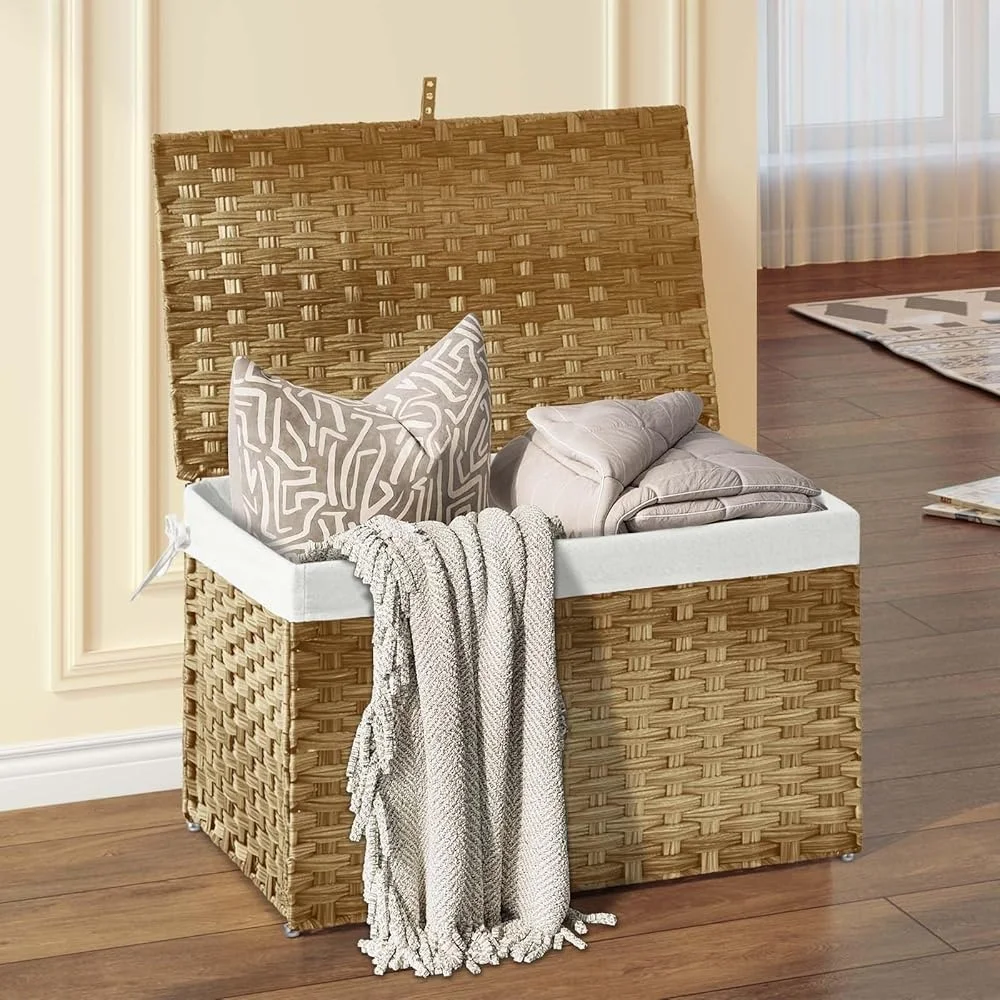
Selecting sustainably produced wicker baskets delivers numerous advantages beyond the environmental benefits:
Environmental Impact Reduction
- Zero plastic contribution to landfills or oceans
- Biodegradability ensures materials return safely to the earth
- Carbon sequestration during plant growth offsets production impacts
- Minimal processing reduces energy consumption and pollution
Health Benefits
- No off-gassing of harmful chemicals in your home
- Natural materials improve indoor air quality compared to synthetic alternatives
- Absence of petroleum-based components eliminates related health concerns
- Natural antimicrobial properties in some materials like bamboo
Superior Durability
- Well-crafted natural wicker often outlasts synthetic versions
- Develops character with age rather than degrading
- Can be repaired rather than replaced when damaged
- Maintains structural integrity for years with proper care
Aesthetic Versatility
- Complements virtually any interior design style
- Natural variations create unique, one-of-a-kind pieces
- Adds organic texture and warmth to contemporary spaces
- Ages gracefully, developing rich patina over time
When selecting storage solutions, the ultimate guide to laundry basket materials can help you understand which eco-friendly options best suit specific needs around your home.
Black Wicker Baskets, Rattan Storage Baskets, Tall Wicker Baskets, Wicker Shelf Baskets, Woven Storage Baskets
5-Tier Distressed Black Wood Frame Storage Tower with Removable Wicker Baskets for Home Organization$715.80 Select options This product has multiple variants. The options may be chosen on the product pageWicker Laundry Baskets, Woven Laundry Baskets, Woven Storage Baskets
$392.02 Select options This product has multiple variants. The options may be chosen on the product pageRattan Shelf Baskets, Rattan Storage Baskets, Small Wicker Baskets, Square Wicker Baskets
Square Plastic Wicker Storage Baskets Set of 3 with Collapsible Design for Cube Storage Organization$185.47 Select options This product has multiple variants. The options may be chosen on the product pageWicker Baskets with Handles, Wicker Storage Baskets, Woven Storage Baskets
$137.92 Select options This product has multiple variants. The options may be chosen on the product pageLarge Wicker Laundry Baskets, Tall Wicker Baskets, Woven Laundry Hampers, Woven Storage Baskets
$130.54 Select options This product has multiple variants. The options may be chosen on the product pageWoven Laundry Baskets, Woven Laundry Washing Baskets
Price range: $136.76 through $581.37 Select options This product has multiple variants. The options may be chosen on the product page
Natural vs. Synthetic Wicker: How to Identify Truly Eco-Friendly Baskets
With increased interest in sustainable home goods has come an increase in products that merely appear eco-friendly. Knowing how to distinguish genuine natural wicker from synthetic alternatives ensures your choices align with your environmental values.
Visual Differences
Natural wicker materials typically show:
– Slight irregularities in color and texture
– Visible natural grain patterns
– Matte finish unless treated with natural oils
– Subtle variations between strands
Synthetic wicker usually displays:
– Perfect uniformity in color and texture
– Absence of natural grain patterns
– Slightly shiny or artificial-looking surface
– Identical appearance across all strands
Tactile Identification
When touching the materials:
– Natural wicker feels slightly uneven, organic, and sometimes rough
– Plant-based materials have varying flexibility depending on the species
– Natural fibers may feel slightly cool to initial touch
– Weight typically feels appropriate to size—not too light or heavy
Synthetic alternatives often:
– Feel uniformly smooth or artificially textured
– Have consistent flexibility throughout
– May feel slightly warm or plastic-like to touch
– Can be unexpectedly light for their size
For specific applications like laundry storage, understanding natural vs synthetic wicker laundry options helps you select the most appropriate and sustainable choice.
Selecting the Perfect Eco-Friendly Wicker Basket: A Buyer’s Guide
Finding the ideal sustainable wicker basket involves considering both your specific needs and the environmental credentials of the product.
Assess Your Requirements
Begin by clearly defining how the basket will serve you:
– What will you store inside? (Weight, size, and shape considerations)
– Where will the basket be placed? (Humidity levels, sun exposure)
– Will it need to withstand frequent handling or movement?
– Is visual appeal or purely functional storage more important?
– Do you need a lid, handles, or dividers?
Evaluate Material Suitability
Different eco-friendly materials excel in different environments:
– Rattan and bamboo offer exceptional strength for heavier items
– Seagrass naturally resists moisture for bathroom or kitchen use
– Willow provides lightweight durability for frequently moved items
– Water hyacinth creates substantial, statement pieces for visible storage
Quality Indicators
Look for signs of superior craftsmanship:
– Tight, consistent weaving with no large gaps
– Smooth, finished edges without sharp protrusions
– Sturdy construction that doesn’t flex excessively when lifted
– Even color application if dyed
– Proper reinforcement at stress points like handles
Our wicker baskets with handles showcase these quality markers while providing practical functionality for everyday use.
Transparency in Sourcing
Quality producers willingly share:
– Material origins and species
– Harvesting methods
– Production techniques
– Environmental commitments
– Artisan involvement and fair labor practices
This information helps you verify the genuine sustainability of your purchase while supporting responsible business practices.
Caring for Your Eco-Friendly Wicker: Maximizing Longevity and Beauty
Proper maintenance extends the life of natural wicker baskets, enhancing their sustainability by reducing replacement frequency.
Regular Maintenance
Establish these simple habits to preserve your baskets:
– Dust weekly using a soft brush or vacuum with brush attachment
– Keep away from direct sunlight which can cause drying and fading
– Maintain reasonable humidity levels (extremely dry air causes brittleness)
– Rotate occasionally if partial sun exposure is unavoidable
– Avoid overloading which can stress the structure
Cleaning Techniques
When deeper cleaning becomes necessary:
– For light soiling, wipe with a slightly damp cloth and allow to dry completely
– For more stubborn dirt, use a soft brush with mild soap and water solution
– Clean spills immediately to prevent staining
– Always ensure baskets dry thoroughly to prevent mold
– Apply natural oils occasionally to prevent brittleness in dry environments
For detailed maintenance information, our guide on how to clean wicker baskets provides material-specific care instructions.
Storage Considerations
When not in use:
– Store in climate-controlled environments
– Avoid damp basements or overly hot attics
– Place heavier items on bottom, never on top of wicker
– Don’t stack unless baskets are specifically designed for it
– Consider light dust covers for seasonal items
How Tidy Treasure Selects Premium Sustainable Wicker for Your Home
At Tidy Treasure, our commitment to sustainable, beautiful organization solutions guides our rigorous selection process for wicker products.
We evaluate each potential addition to our collection based on multiple criteria:
- Sustainable material sourcing with documented harvesting practices
- Superior craftsmanship with consistent, tight weaving
- Structural integrity that ensures long-term durability
- Versatile design that functions effectively while enhancing home aesthetics
- Appropriate weight and balance for intended use
- Beautiful finishing that highlights natural material characteristics
This careful curation process ensures that our wicker baskets deliver on our promise of “Organizing Life Beautifully.” Each piece seamlessly combines practical storage with natural elegance, transforming everyday organization into an opportunity for home enhancement.
Our wicker collections span diverse home environments—from bathroom organizers to living room statement pieces—all united by their sustainable materials and quality construction. By selecting products that meet these high standards, we provide storage solutions that benefit both your home and the planet.
Frequently Asked Questions About Eco-Friendly Wicker Materials
How long do natural wicker baskets typically last?
With proper care, high-quality wicker baskets made from natural materials can last anywhere from 10 to 25 years or more. Rattan baskets often have the longest lifespan, while softer materials like seagrass may need replacement sooner.
Are natural wicker baskets water-resistant?
Most natural wicker has limited water resistance. Seagrass offers better moisture handling than others due to its marine origin. For high-humidity areas, look for baskets with special treatments or consider water hyacinth, which naturally withstands moisture better than most materials.
Do eco-friendly wicker baskets cost more than synthetic options?
Initially, yes—quality natural materials often command higher prices than plastic alternatives. However, the durability of well-made natural wicker often provides better long-term value, with baskets lasting many years longer than synthetic versions.
Can natural wicker baskets be used outdoors?
Most natural wicker materials are designed for indoor use. Continuous outdoor exposure to rain, sun, and temperature fluctuations significantly shortens their lifespan. For outdoor applications, look for specially treated natural materials or consider limited outdoor exposure.
How can I verify if a wicker basket is truly made from sustainable materials?
Look for specific material identification rather than generic “wicker” labeling. Reputable sellers will identify the exact plant material used (rattan, seagrass, etc.) and often provide information about harvesting practices and production methods.
Integrating Eco-Friendly Wicker Baskets into Your Sustainable Home
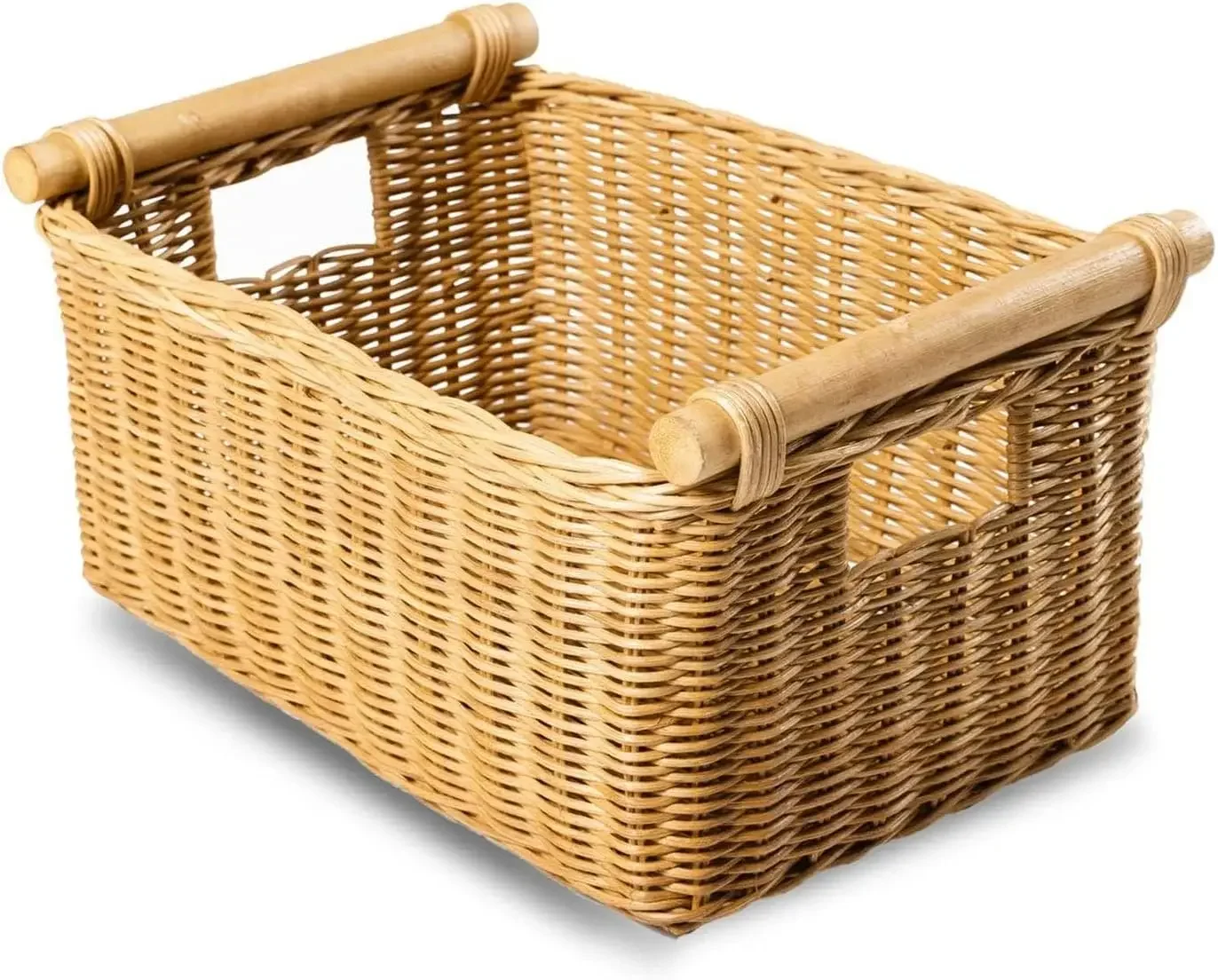
Eco-friendly wicker baskets offer nearly limitless possibilities for beautiful, sustainable organization throughout your home. Their natural versatility allows them to enhance any room while providing practical storage solutions.
Bathroom Organization
- Use small seagrass baskets for toiletries and cosmetics
- Store towels in larger water hyacinth containers that resist bathroom humidity
- Organize under-sink supplies in structured rattan baskets
- Create a cohesive look with matching laundry hampers and storage
Kitchen Storage
- Display fruits and vegetables in open-weave bamboo baskets
- Organize pantry items by category in labeled willow containers
- Store seldom-used items in lidded baskets atop cabinets
- Create mobile storage with handled baskets for cleaning supplies
Living Area Organization
- Manage remote controls and electronics in small desktop baskets
- Store throw blankets and pillows in large floor baskets
- Organize magazines and books in structured rectangular designs
- Create toy storage that doubles as décor with colorful rattan options
Home Office Solutions
- Corral papers and documents in letter-sized rectangular baskets
- Organize desk supplies in small compartmentalized designs
- Store reference materials in stackable containers with lids
- Create filing systems with uniform basket sets
The decorative uses for small wicker baskets extend beyond pure organization, allowing these sustainable pieces to serve as design elements throughout your home.
By thoughtfully incorporating eco-friendly wicker baskets into your organization systems, you create a home that’s not only beautifully organized but also aligned with environmental values. These natural storage solutions prove that sustainability and style work perfectly together in the well-organized home.

